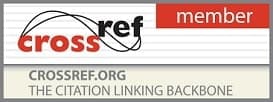Vol. 9, Issue 1, Part D (2025)
Evaluation the knowledge of patients presenting with burn injuries regarding prevention and treatment
Mostafa Amin Khan, Afrina Sharmin, Zaman Ummay Humayra, Md. Afzal Hossain and Farhana Alam
Background: Burn injuries are a major global health issue, particularly in low- and middle-income countries (LMICs) like Bangladesh, where limited healthcare access and poor awareness contribute to high morbidity and mortality. Unsafe cooking practices, industrial accidents, and fire safety negligence increase burn risks. Proper first-aid management is crucial to improving outcomes, yet misconceptions such as using toothpaste or raw eggs persist. Understanding public knowledge gaps can guide educational interventions. Studies show that awareness programs effectively enhance burn prevention and treatment practices.
Aim of the study: This study aims to evaluate the knowledge of patients presenting with first- and second-degree burns regarding burn prevention and treatment.
Methods: This prospective observational study was conducted at the Department of Burn and Plastic Surgery, Dhaka National Medical College and Hospital, Dhaka, Bangladesh from January to December 2017 enrolling 100 patients with first and second-degree burns. Inclusion criteria encompassed all age groups providing informed consent, while patients with third-degree burns or requiring intensive care were excluded. Burn injuries were assessed based on extent, depth, and location, alongside demographic and burn-related data. Knowledge was evaluated using a structured questionnaire covering perception-based assessment, basic knowledge, and general perceptions. Data were analyzed using SPSS version 26.0, with descriptive statistics summarizing continuous and categorical variables as means, standard deviations, frequencies, and percentages.
Result: The study found that the most affected age group was 18-30 years (38%), with thermal burns being the leading cause (56%). Half of the participants had burns covering less than 10% of their total body surface area (TBSA). The perception-based assessment revealed varied understanding of burn injury management. Knowledge assessment scores ranged from 52% to 60%, indicating moderate awareness of prevention and treatment. Perceptions of burn injuries varied, reflecting different beliefs. Knowledge levels were categorized as poor (25%), moderate (44%), and good (31%), highlighting the need for improved education on burn prevention and care.
Conclusion: The study reveals significant gaps in burn injury awareness among Bangladeshi patients, with 25% having poor knowledge. Young adults are most affected, and thermal burns are most common. The findings emphasize the need for targeted education through structured awareness programs, community campaigns, and school curriculum integration to reduce burn-related morbidity.
Pages: 230-233 | 1562 Views 179 Downloads









